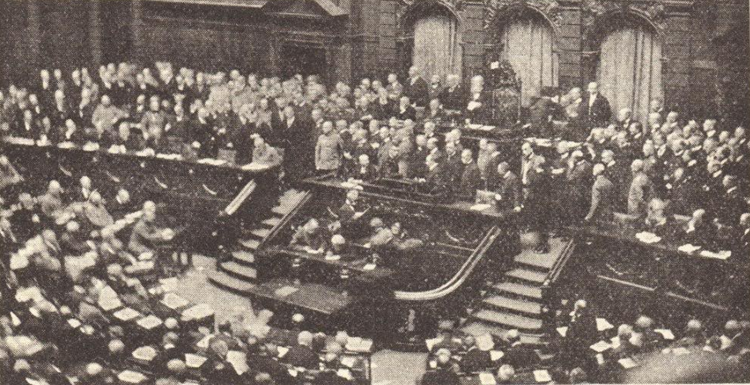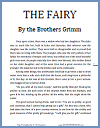German Reichstag in session following the Great War (World War I). Click here to enlarge.
The German Reichstag, an iconic symbol of Germany's turbulent history and democratic evolution, is one of Berlin's most significant landmarks. Originally constructed between 1884 and 1894, the Reichstag served as the seat of the German parliament, the Reichstag, during the German Empire and the Weimar Republic.
Designed by architect Paul Wallot, the building featured a distinctive neo-Renaissance style with an impressive dome that symbolized the power and stability of the German state. However, the Reichstag's history has been marked by dramatic events that reflect Germany's political upheavals.
One of the most notable events occurred on February 27, 1933, when the Reichstag building was set ablaze in an arson attack. This incident, known as the Reichstag Fire, was pivotal in the rise of Adolf Hitler and the Nazi Party. Hitler used the fire as a pretext to suspend civil liberties and eliminate political opposition, leading to the establishment of a totalitarian regime.
After World War II, the Reichstag fell into disrepair as Berlin was divided during the Cold War. The building, situated in West Berlin, stood as a poignant reminder of Germany's divided past. It wasn't until after the reunification of Germany in 1990 that the Reichstag underwent a major restoration.
British architect Sir Norman Foster led the renovation project, completed in 1999, which included the addition of a modern glass dome. This new dome, accessible to the public, symbolizes transparency and openness in government, embodying Germany's commitment to democracy. The Reichstag once again became the seat of the German Bundestag, the federal parliament.
Today, the Reichstag is not only a functioning legislative building but also a major tourist attraction. Visitors can explore its historical exhibits and enjoy panoramic views of Berlin from the dome, making it a powerful symbol of Germany's journey from division to unity and from dictatorship to democracy.
|















